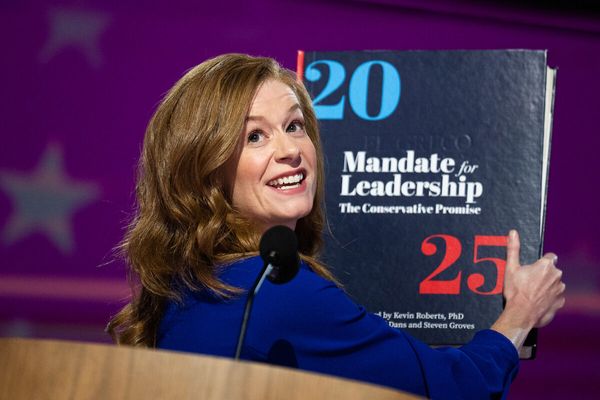
The most obvious point to make about Tanya Plibersek’s approval of three coalmine expansions on Tuesday is the most important. The potential climate impact is substantial, and far beyond anything else we have seen approved so far by the Albanese government.
Labor has been criticised for its support of new fossil fuel developments before, but the four coal developments it had backed prior to this were relatively small. They are expected to add about 156m tonnes of heat-trapping carbon dioxide to the atmosphere if fully developed.
The new expansions easily dwarf this. According to the Australia Institute’s coalmine tracker, by the time the last of them winds up in 2048 they could have released more than 1.35bn tonnes of CO2. That’s globally significant – roughly what Australia’s entire domestic economy is expected to emit over the next three years.
The developments are at odds with the intent and spirit of the deal backed by nearly 200 countries – and loudly championed by the climate change minister, Chris Bowen – at the Cop28 climate summit in Dubai last December.
That agreement called on all countries to contribute to global efforts to transition away from fossil fuels in energy systems “in a just, orderly and equitable manner, accelerating action in this critical decade”. Yes, the deal isn’t binding and there is wriggle room in the wording, mostly to accommodate Russia and other petrostates that Australia would not want to be associated with.
But the question for the Albanese government is pretty straightforward: how does a massive coal expansion lasting decades line up with what it has pledged on the global stage?
Leaders of low-lying Pacific nations, in particular, might appreciate some answers. Less than four weeks ago, Anthony Albanese was in Tonga declaring his commitment to climate action at the Pacific Islands Forum, and explaining why Australia wants to co-host the Cop31 climate summit with island nations in 2026. As far as we know, allowing more than a billion tonnes of additional CO2 currently trapped beneath the ground to be dug up and burned didn’t get a mention.
The government’s position is more galling when you consider that the approval is for thermal coalmines to mostly feed overseas power plants. There is a case – albeit a contested case – that metallurgical coal used in steelmaking will have a longer life as alternatives are still coming online.
This isn’t the case with coal-fired electricity. While it won’t end overnight, there are affordable zero-emissions replacements for thermal coal readily available, and it is an area in which a rapid transition is possible. The Albanese government expects Australia to be basically off it as a power source at home by 2035. Not every country has our renewable energy resources, but Australia could be doing more to help other countries accelerate in that direction.
Backing large coal mining developments does the opposite to this. It further entrenches the polluting status quo. It works against the government’s declared goal of keeping global heating since preindustrial times well below 2C and aiming for 1.5C.
Plibersek’s justifications for the approval decisions include that she is acting in accordance with national environment law and the emissions would be considered under the “safeguard mechanism”, a policy meant to cap and reduce pollution at major industrial sites.
Neither of these arguments stand up to scrutiny. The safeguard applies only to emissions within Australia. Coalmines leak greenhouse gases, but the overwhelming bulk of their climate pollution – more than 90% – is released when the coal is burned overseas, far from the domestic policy’s reach.
On environmental law, the government could rewrite the Howard government-era Environment Protection and Biodiversity Conservation Act to introduce a climate impact assessment for new developments if it chose to. The Greens and key independents want it. The prime minister, under pressure from mining interests and some media on the issue, is opposed. It’s a political choice.
The government knows approving coalmines is a bad look. Plibersek puts out a media release when she blocks a coalmine or greenlights a renewable energy development. As we have noted before, the approval of fossil fuel developments tends to get a different treatment. No media release is published issued, and the decisions come in a group to minimise the number of negative stories.
Addressing the climate crisis is challenging and complicated. The government sometimes gets frustrated with what it sees as a simplistic public debate about it. It thinks its opponents get an easy ride from the media and aren’t held properly accountable for what they say. Sometimes it has a point.
But it is the government. When it approves thermal coalmine developments of this size it should be frustrated – or more – with itself. It is undermining its own case that it is serious about the problem.
Before the election in 2022, Albanese declared he wanted climate action to be his legacy. It seems unlikely this is what he meant.







